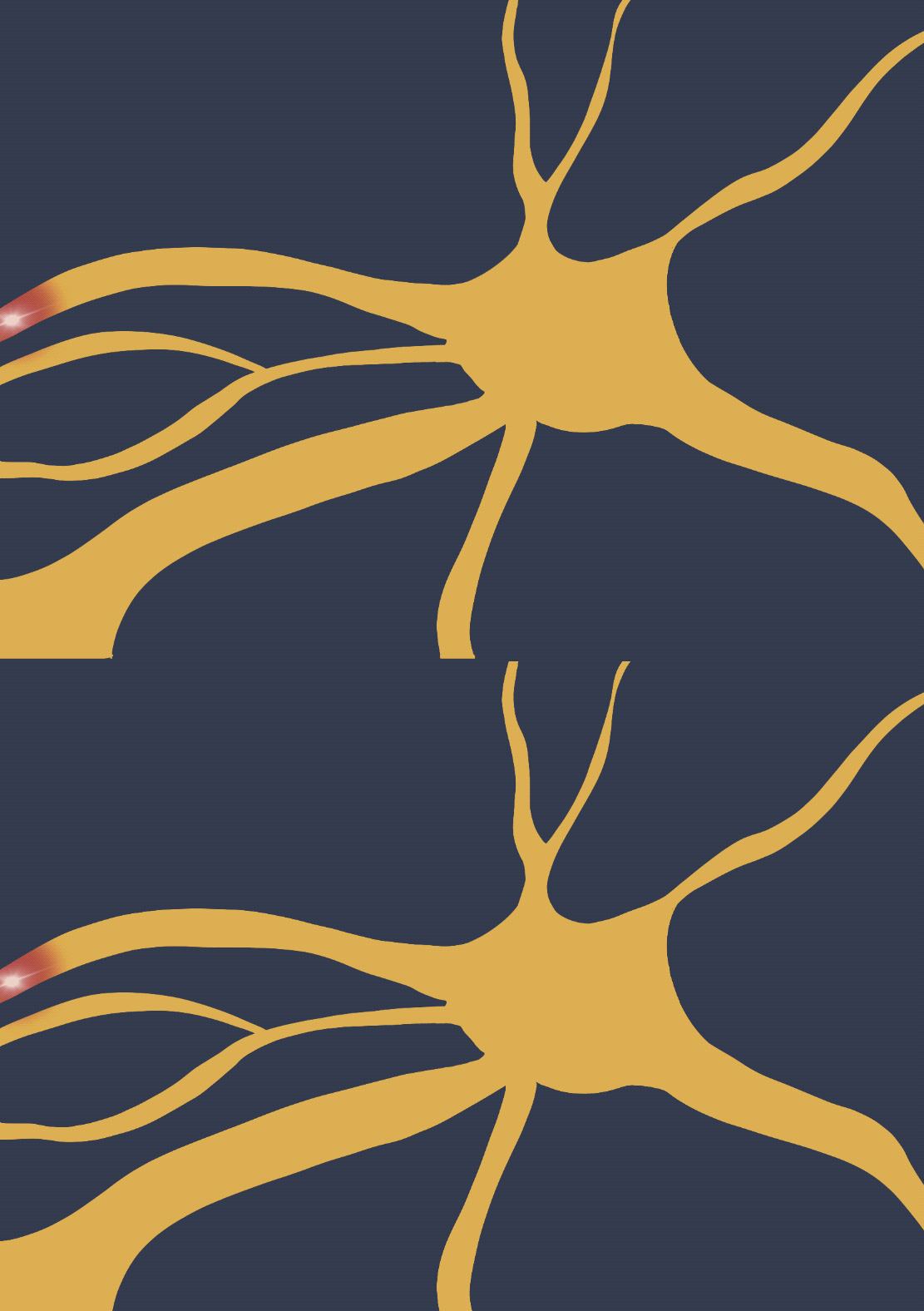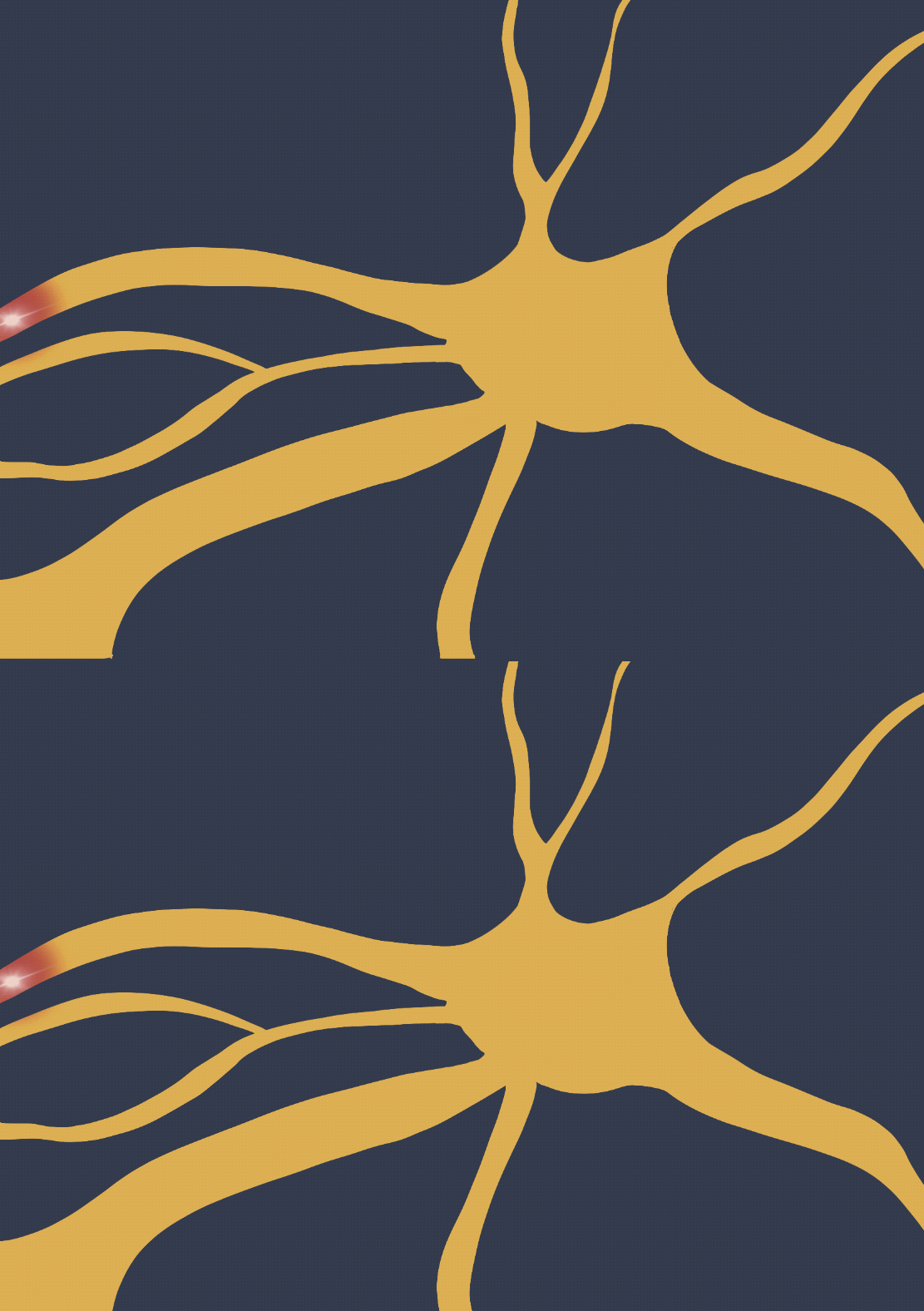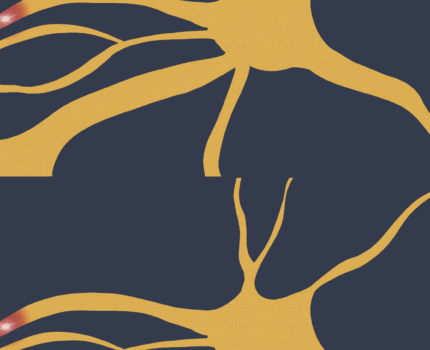
For my STEAM project, I choose to represent how chronic pain is perceived through the medium of digital animation. The video shows a comparison between how chronic pain is developed after an initial injury (the top half of the animation) v.s. someone who does not develop chronic pain after an injury (the bottom half of the animation).
In both images you can see the initial pain signal travel through a dendrite to the stoma. The stoma, where the main parts of the cell are, quickly figures out where the signal needs to go and then the electrical signal is then carried away through the axon. This is when the two images differ from each other. In the top image, the stoma continues to process and send the pain signal through the axon over and over again. This all happens in a fraction of a second. My animation is very slow in comparison to how it is happening in the body and brain. This represents my understanding on how chronic pain is being signaled to the brain.
Diving deeper into this topic, chronic pain is defined as a condition in which pain goes from a short term issue to a long lasting issue. (Tracey & Bushnell, 2009) This is when the pain lasts a long while past the initial injury. However the thing that I wanted to figure out was, why.
There are many reasons that a person is experiencing chronic pain. For example, they could have neuropathic pain. This can happen when part of your nervous system gets damaged or malfunctions. Another thing that can cause pain is musculoskeletal pain. This type of pain often is the result of injuries of the bones, muscle and/or the tendons, like dislocation, fractures, breakage, and sometimes even general excessive use. There are many common reasons for chronic pain, however it doesn’t necessarily mean that it has a direct cause. (Chronic Pain, 2024)
Now that we know why, let us figure out how. The neurotransmitters, the chemicals that help transmit the electrical impulses from neuron to neuron, are sent out to bind to neurotransmitters from the nearby neuron. This allows for the initial signal to be transmitted. However, in the instance of chronic pain, the neurotransmitters are not just sent out when the signal is needed. They keep being sent out and repeating the signal, maintaining the pain for a long period of time. (Yang & Chang, 2019)
Chronic pain is not felt as one type of pain, just to be defined as such it needs to have been occurring for at least three months. The types of pain and discover that people suffering with this are aching, burning, shooting, squeezing, stiffness, stinging, or throbbing. It also commonly leads to other issues like generalized anxiety disorder, major depressive disorder, fatigue, insomnia, irritability or mood swings. (Chronic Pain, 2024)
The course objectives that I feel like relate to this topic are: identify the various components and key structures of the nervous system and explain how neurons carry an electrical charge.
References
Does chronic pain ever go away?. Cleveland Clinic. (2024, October 11).
https://my.clevelandclinic.org/health/diseases/4798-chronic-pain
Tracey, I., & Bushnell, M. C. (2009). How neuroimaging studies have challenged us to rethink: Is
chronic pain a disease? The Journal of Pain, 10(11), 1113–1120. https://doi.org/10.1016/j.jpain.2009.09.001
Yang, S., & Chang, M. C. (2019). Chronic pain: Structural and functional changes in brain
structures and associated negative affective states. International Journal of Molecular Sciences, 20(13), 3130. https://doi.org/10.3390/ijms20133130
By Mia DenBoer

